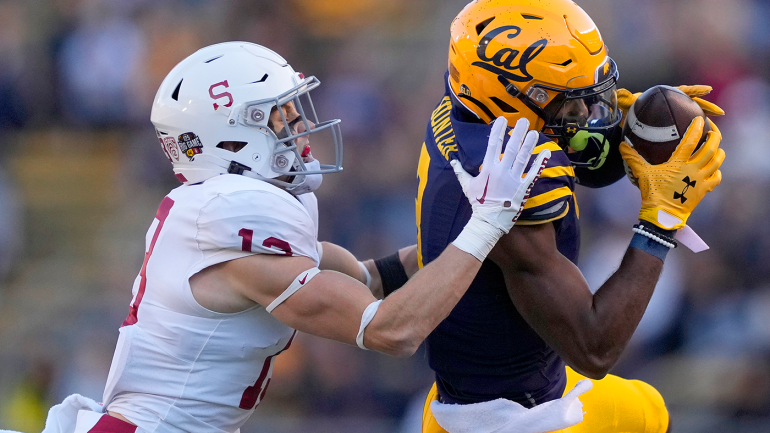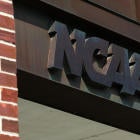
The Power Four was born Friday on stacks of broken promises, backroom deals and bald-faced money grabbing. And those might have been the better qualities. You don't have to like it. You do have to get used to it.
This round of realignment killed off a conference (Pac-12) but actually increased the number of power conference teams. It made a school famous for paying players under the table (SMU) renowned for getting into the ACC without taking a cent (at least for the next nine years).
It made Stanford and California take a look at their reputations -- elite academic institutions that integrated athletics the right way -- and put them on a plane 3,000 miles to Winston-Salem, North Carolina.
All four major conferences now have at least 16 members. The ACC now sits at 18, including Notre Dame. The Big Ten is already at that number beginning in 2024.
Welcome to super-conference college football. The process that some thought would take 10 years ... took a month. What we are witnessing is a culling of the herd. That's ranch talk for whittling down the number of schools that matter (to networks, advertisers, college presidents).
The 68 schools that will make up the Power Four in 2024 represent slightly more than half of FBS (133 programs). Look no further for your big games, demographics, primetime matchups, Heisman Trophies and hype. At least that's what we're being told by those powers listed above.
The race to catch the last flight out of town has made the process cruel to watch. As a conference, the Pac-12 didn't make the cut. However, 10 of the 12 schools found homes elsewhere in the big time largely because of the league's mismanagement.
Oregon State and Washington State didn't make the cut. That's where the line was drawn ... this time.
What those networks, advertisers and CEOs said without saying it: You absolutely can have a credible College Football Playoff without the Beavers and Cougars. It just hurts to see the truth play out in real time. OSU and WSU are out. Meanwhile, BYU, Cincinnati, Houston, SMU and UCF are in.
Oregon State and Washington State will most likely end up in the Mountain West where the revenue and opportunities will be less significant. That's why Florida State and Clemson have been so desperate to earn higher revenue in the ACC -- or find a new home altogether.
"They're going to take a [revenue] haircut," one industry source warned of Oregon State and Washington State. "There is no good solution."
Maybe you don't care, but you should because those same market forces could be coming after your Ol' State U next. Perhaps it's more pertinent to ask what teams from the Big 12 are most attractive to the ACC should it lose Florida State and Clemson?
It isn't going to happen immediately, or even in the next few years. But something like it is absolutely going to happen at some point.
The relevance border won't be drawn outside Corvallis, Oregon, or Pullman, Washington. It might be on the campuses of Vanderbilt or Texas Tech or Iowa State or Pittsburgh or Syracuse. Don't think so? There will be a time when Alabama will wake up and say, "Why, exactly, is Vandy earning an equal revenue share?" And this process will start over again.
The number of Power Four schools that truly matter to those power brokers will actually grow as the number of conferences shrink. The 68 schools now in the Power Four matter most. It will only be a matter of time before the SEC and Big Ten start poking around to make it 20 teams (or more) in each conference.
If the 12-team field had existed since the onset of the College Football Playoff, the SEC and Big Ten would have accounted for an average 7.3 teams per season. That would have left just 4.7 playoff spots for the remaining 99 FBS teams.
That's why Stanford, Cal and SMU did whatever they could to remain in a power conference. And that's what consolidation is about: catching that last flight out of town before the latest realignment hurricane hits.
Stanford and Cal made it -- this time -- as they were willing to compromise their values on their way East. It was the only way to go once rightsholders decided that rivalries now matter more than anything else. ESPN executive Burke Magnus made that stunning conclusion in a podcast last year.
We should have seen where this was headed. Networks don't buy rights to conferences like the ACC, they buy the rights to potentially airing three Duke-North Carolina basketball games each year.
The consolidation of leagues makes Purdue-Illinois more palatable because the Big Ten now also owns not only Ohio State-Michigan, Michigan-Michigan State, Penn State-Michigan and Penn State-Ohio State but also USC-UCLA, USC-Ohio State, Oregon-Washington, UCLA-Michigan and Oregon-Ohio State, too.
In grabbing exclusive rights to the SEC, ESPN now gets Texas-Oklahoma as well as Texas-Alabama, Texas-Georgia, Texas-Florida and Texas-LSU. You might have noticed we haven't even gotten to Alabama-Auburn, Georgia-Auburn and Alabama-LSU.
If you want to see into the future, all you have to do is look at the top. What rivalries outside of the new Big Ten and SEC truly matter?
The ACC can look itself in the mirror by admitting three notable academic institutions. The cash to keep the league from disintegrating doesn't hurt, either. A conference composition clause would allow ESPN to renegotiate the ACC deal if the league falls below 15 members. Now, even if Florida State and Clemson bolt at some future point, the ACC should remain together.
At least that's the expectation.
Those market forces mounted their latest offensive two years ago when it was revealed Texas and Oklahoma were heading to the SEC. With Brett Yormark being a dervish, the Big 12 somehow survived as a member of the elite Power Four ... for now. The Pac-12 did not.
Stanford, Cal and SMU went to the ACC via a dizzying array of give backs and concessions that will -- like USC and UCLA in the Big Ten -- result in them shuttling across four time zones to play games. That might be the tipping point where revenue morphs into revenue sharing. Just ask Jim Harbaugh.
In the end, we are being conditioned even more to watch the top. Meanwhile, Oregon State and Washington State have begun preparing for life out of the spotlight.
And they thought noon ET kickoffs in the good ol' Pac-12 were savage.
![[object Object] Logo](https://sportshub.cbsistatic.com/i/2020/04/22/e9ceb731-8b3f-4c60-98fe-090ab66a2997/screen-shot-2020-04-22-at-11-04-56-am.png)

















